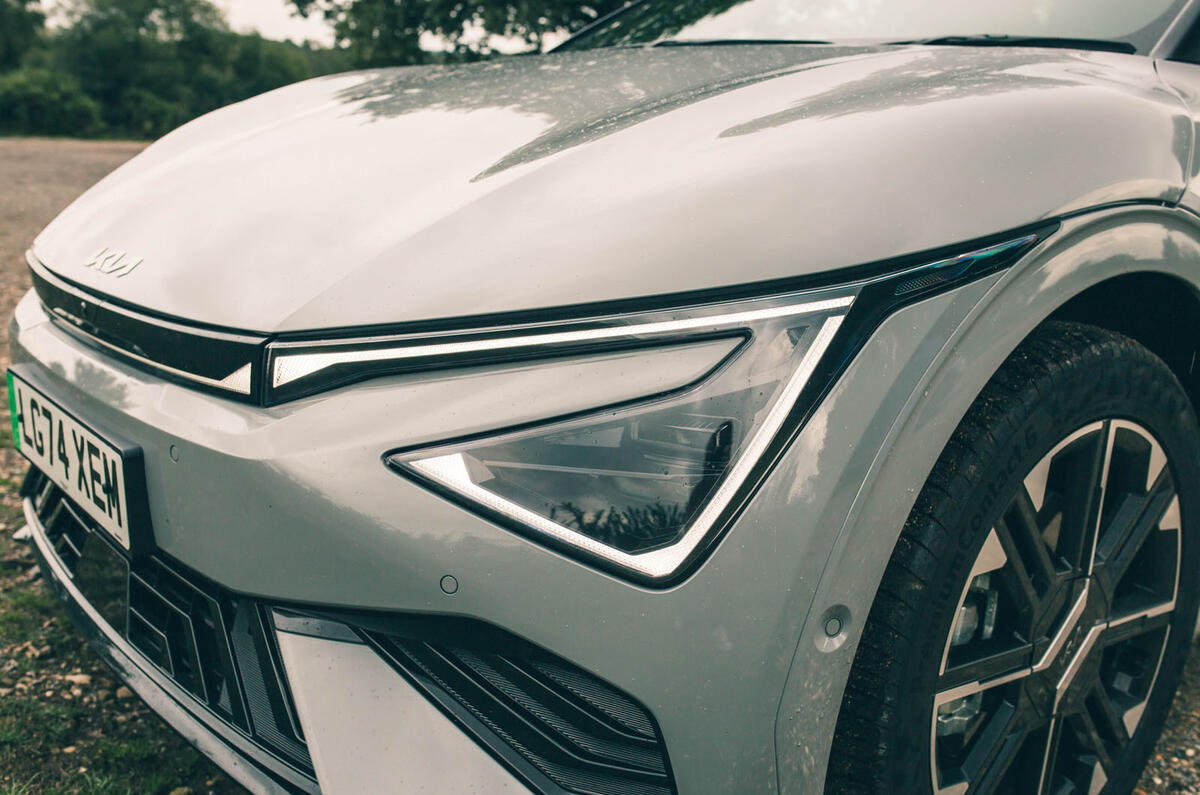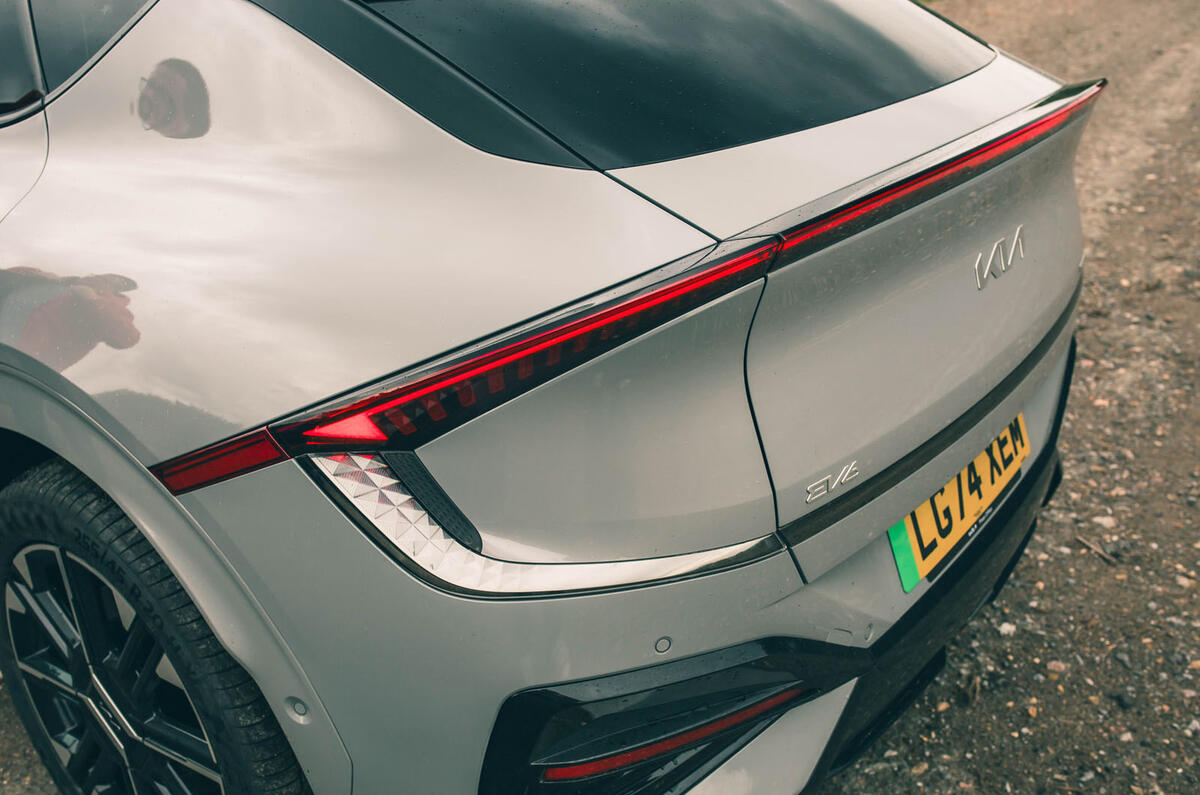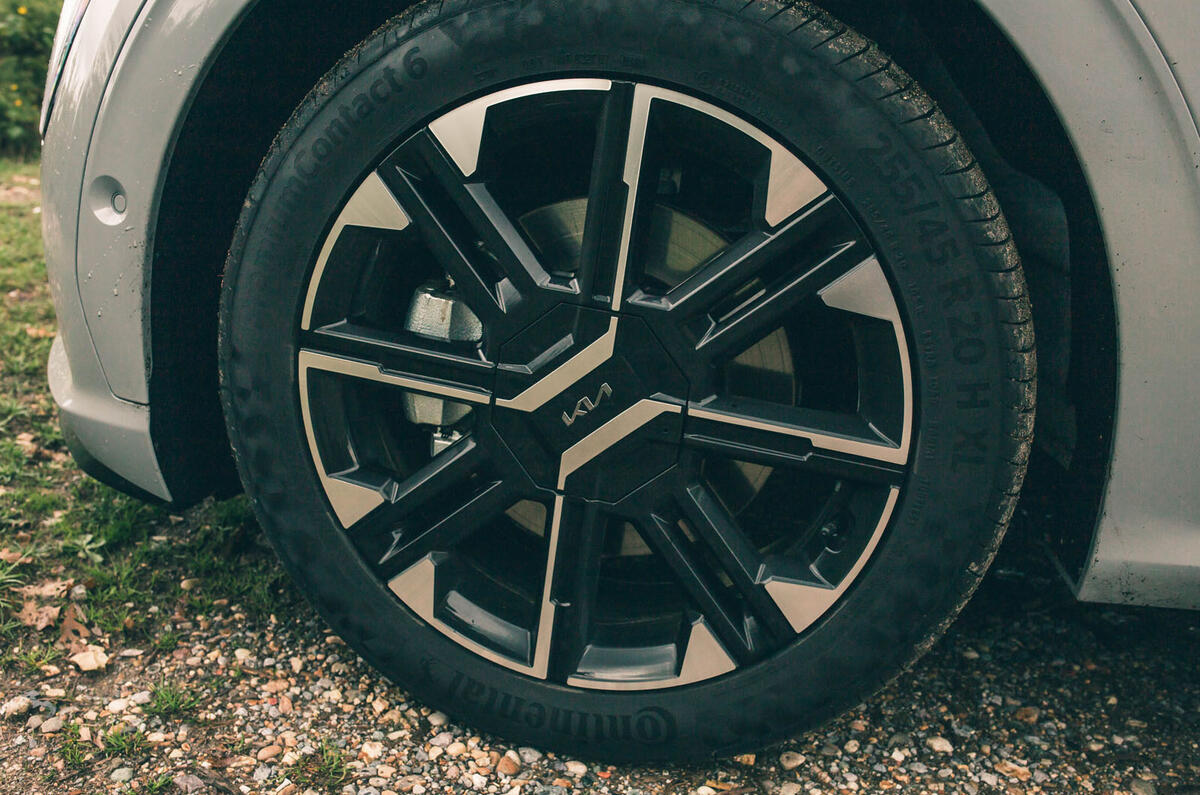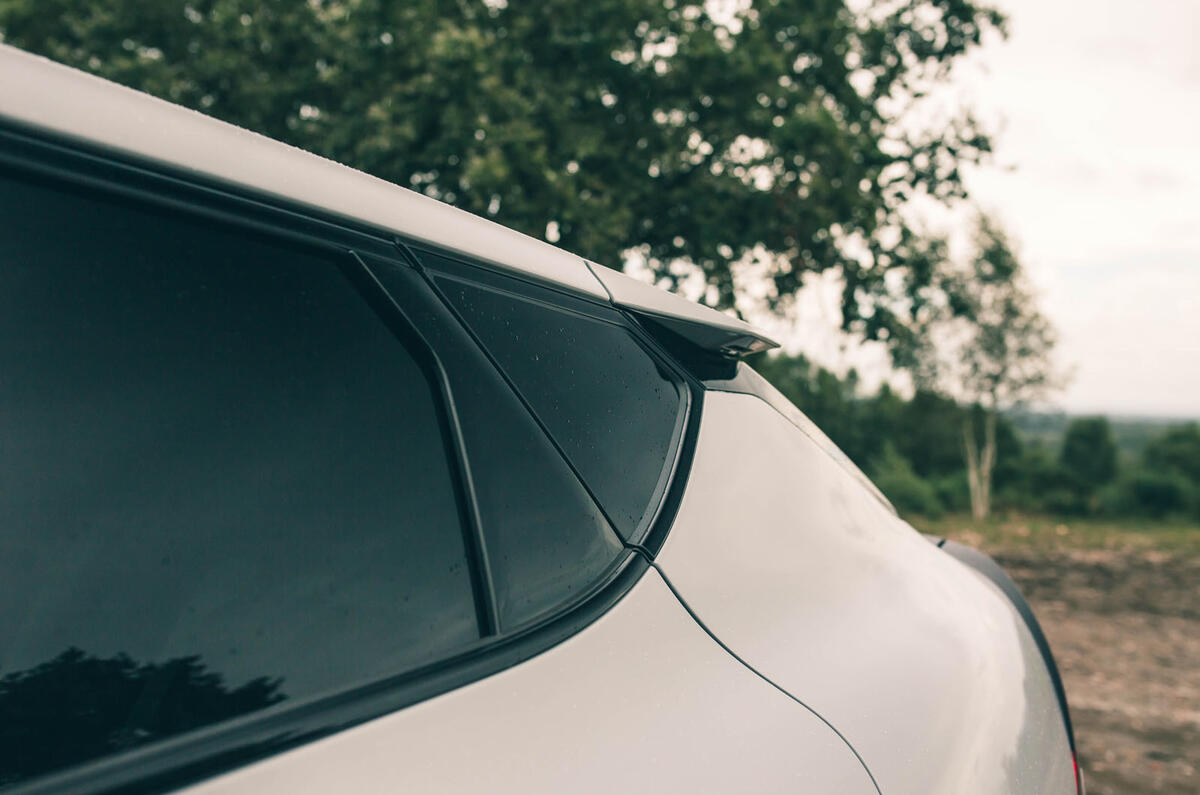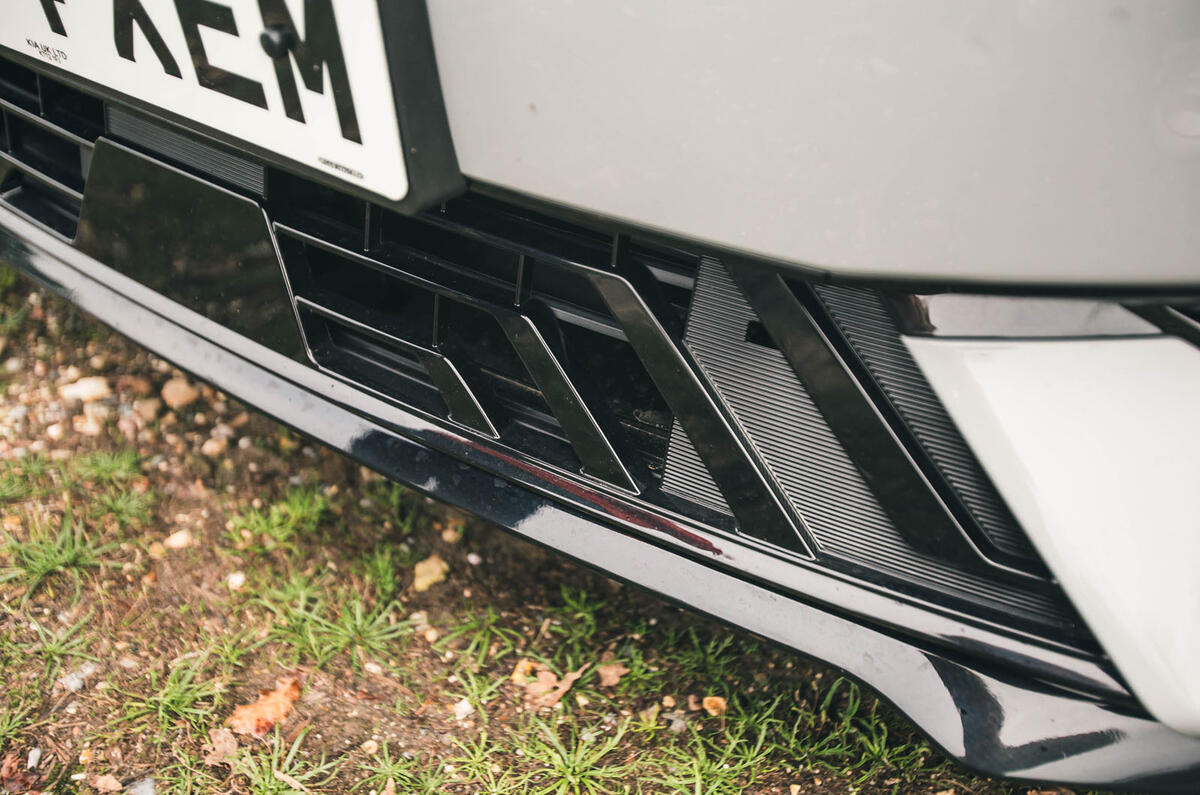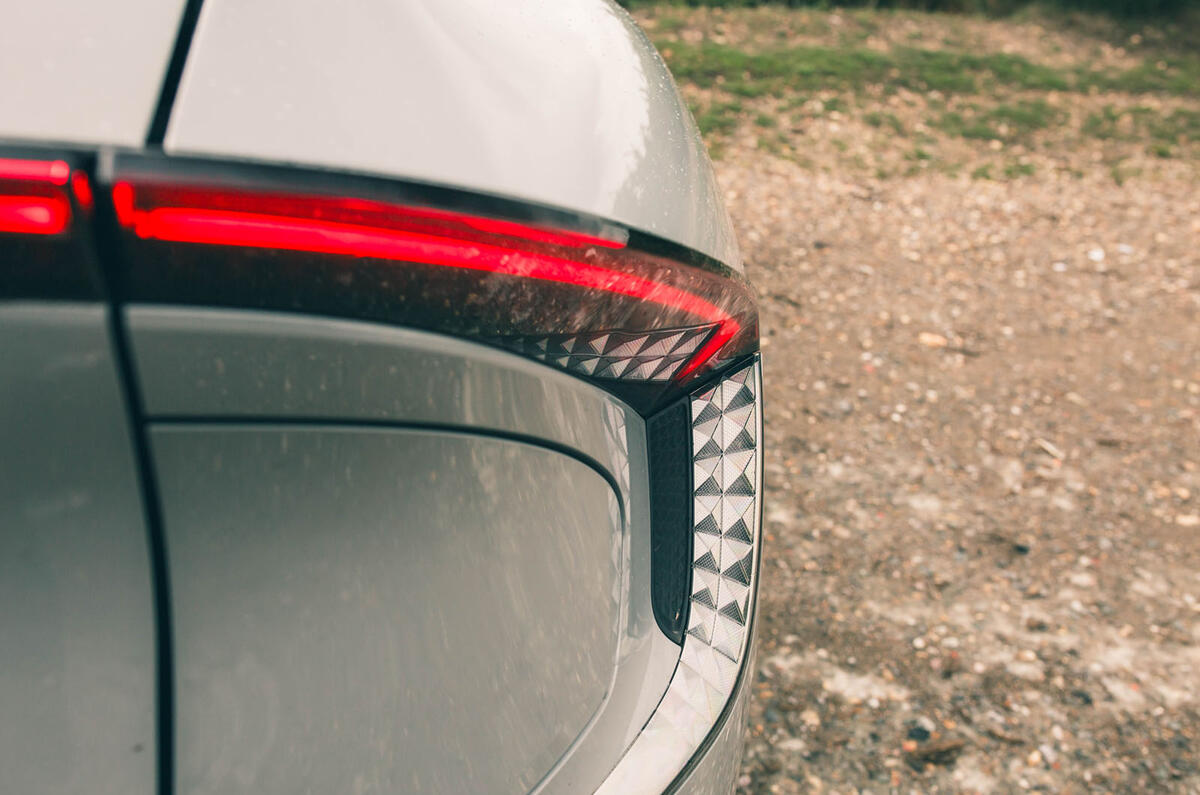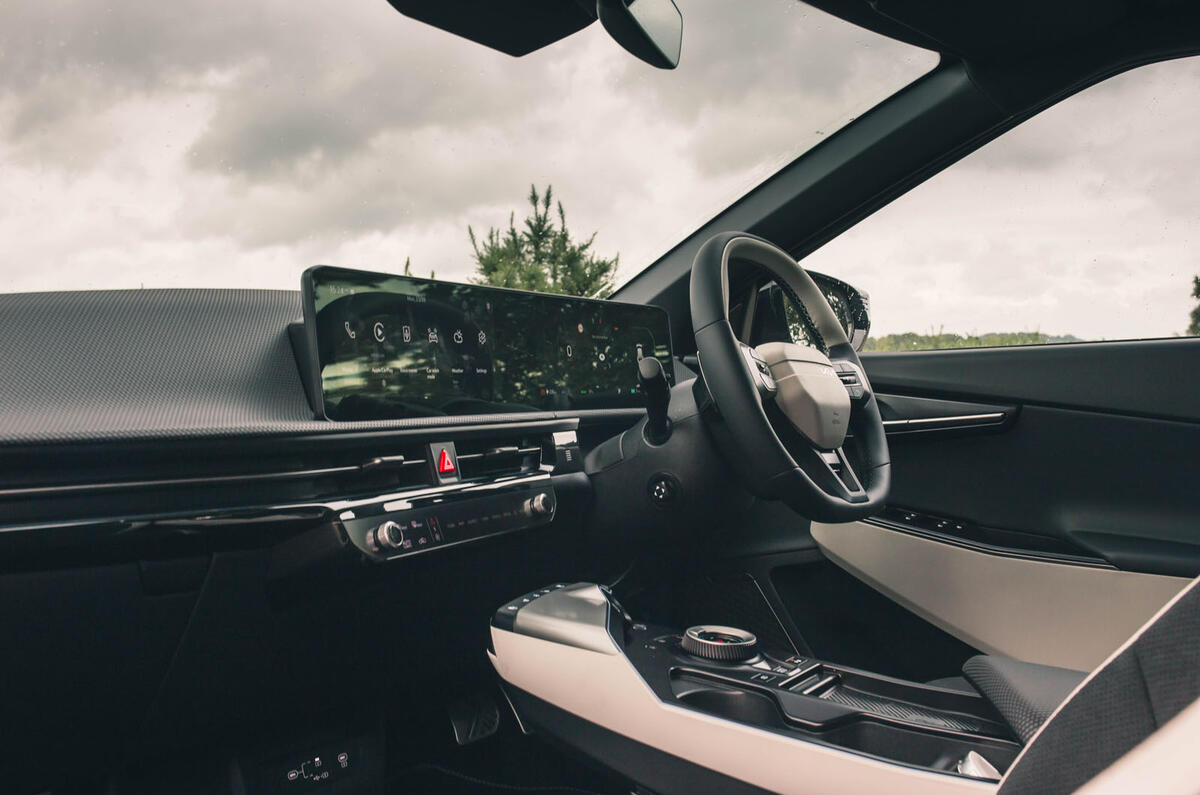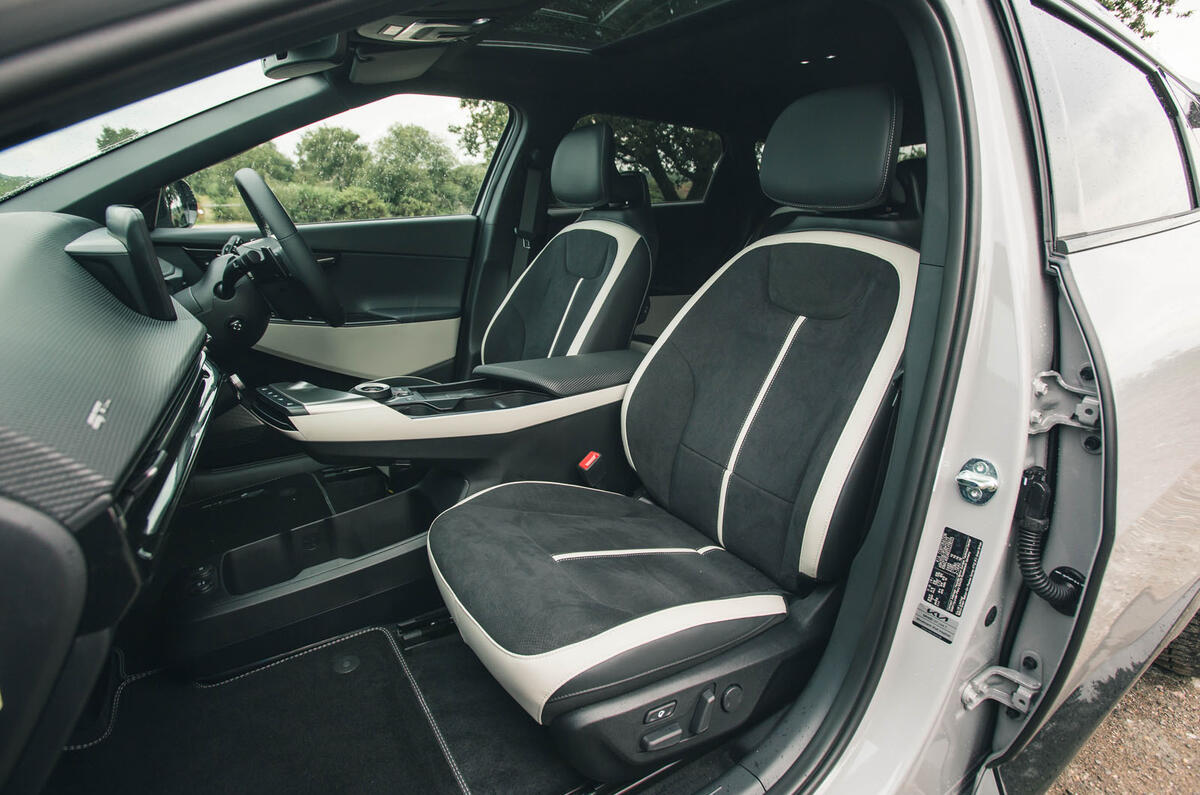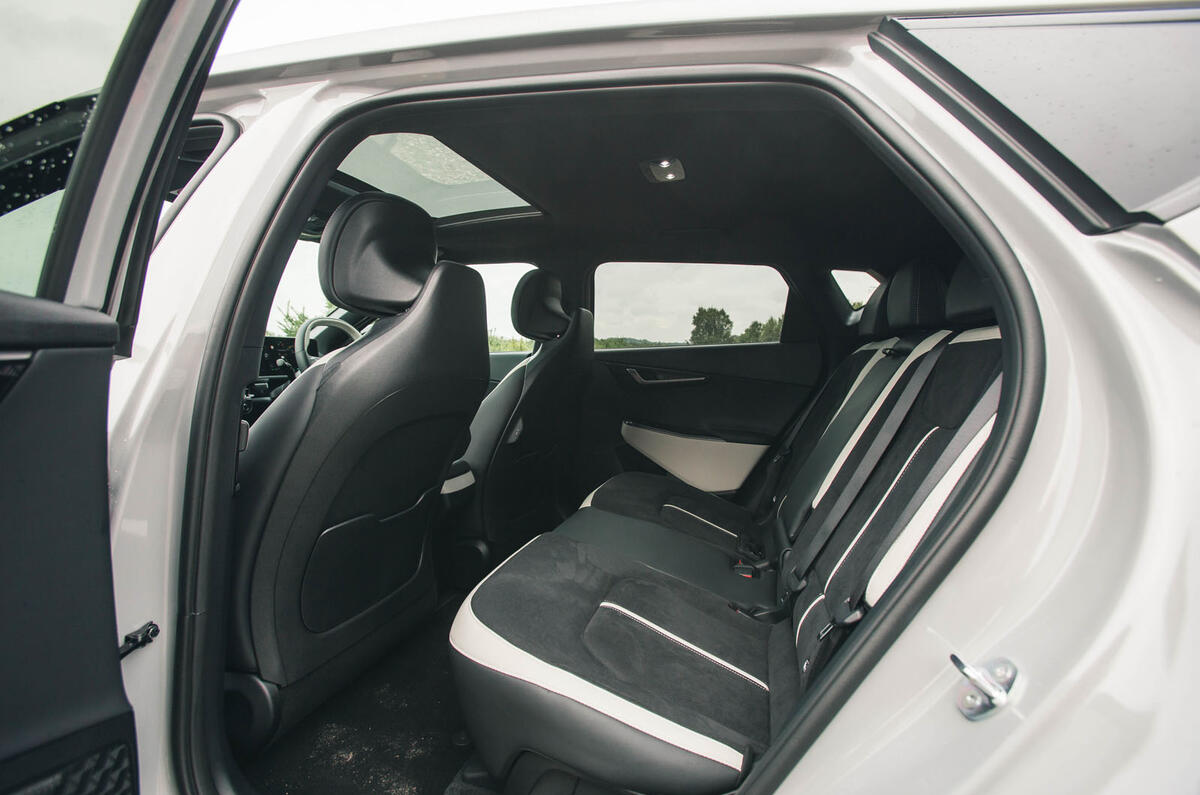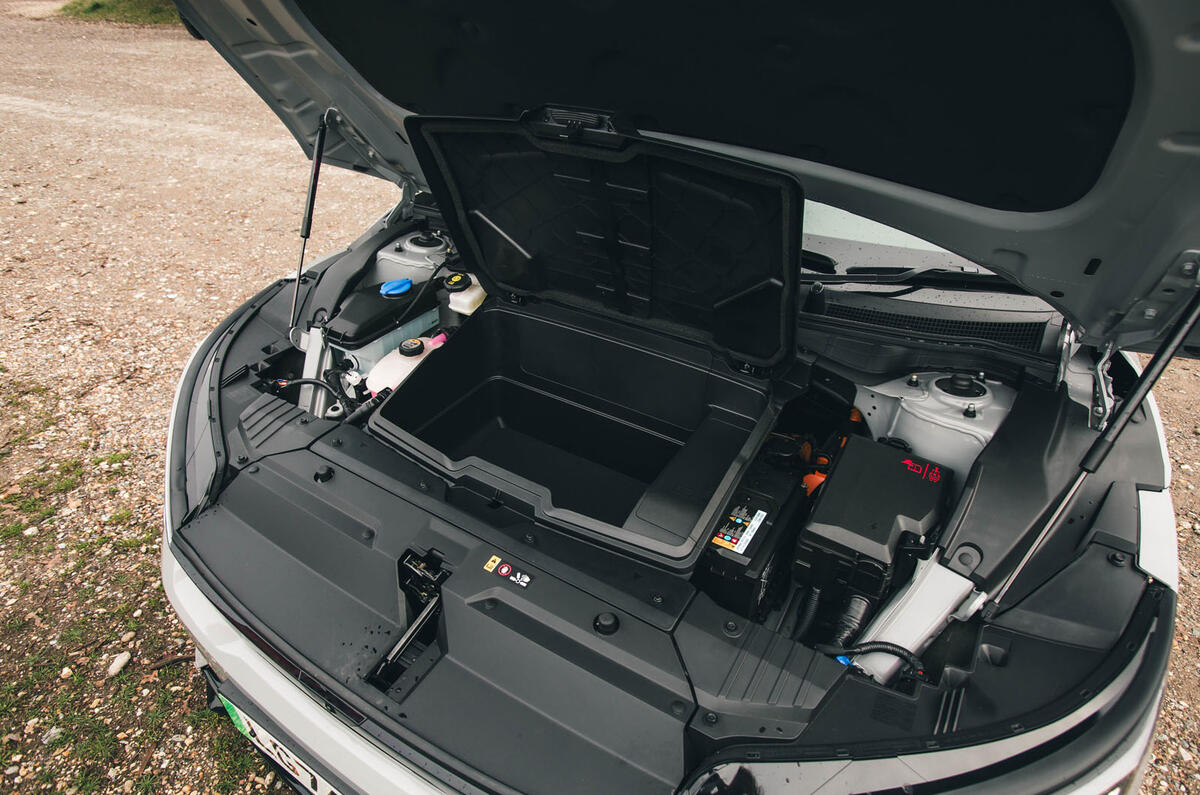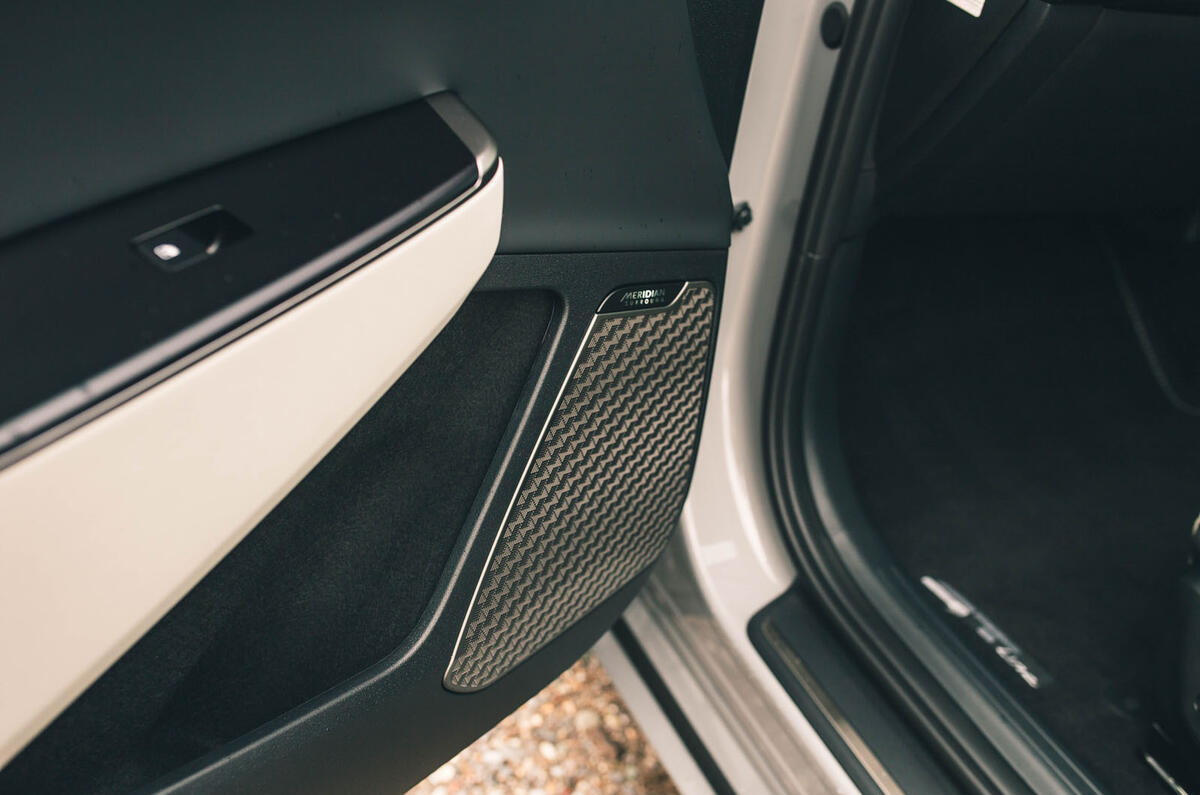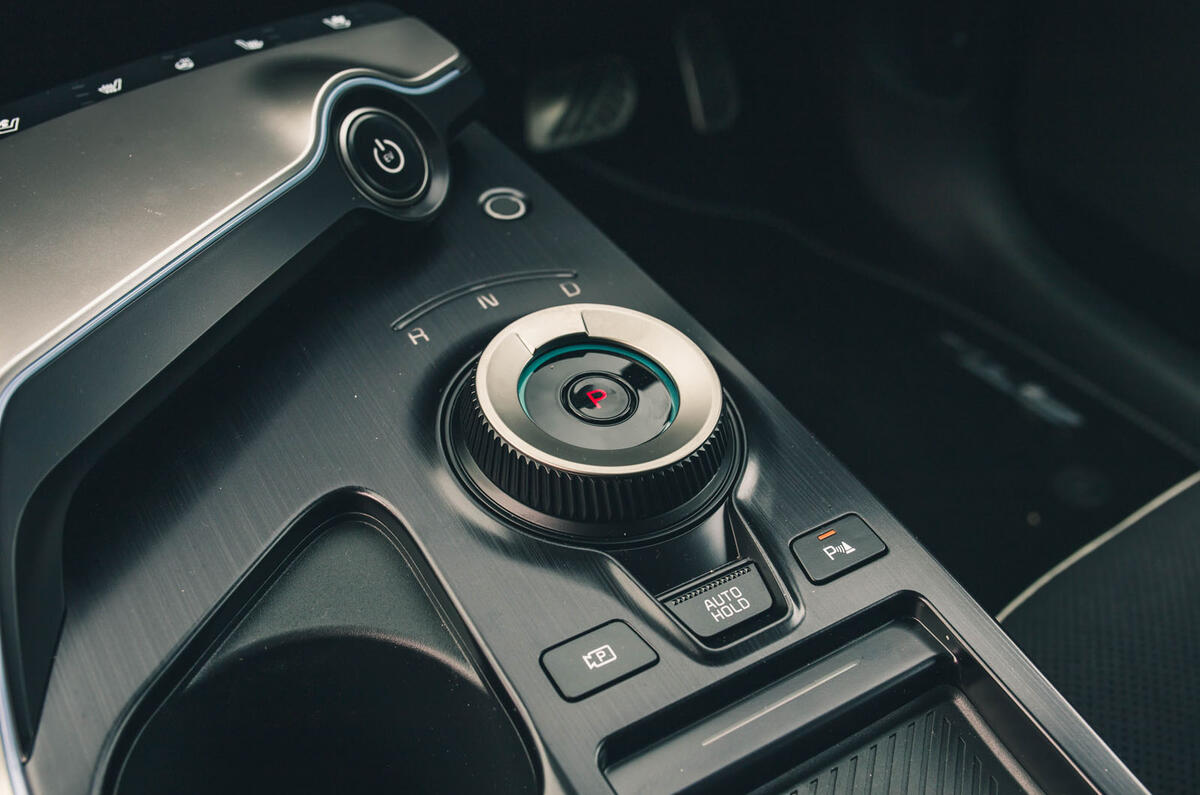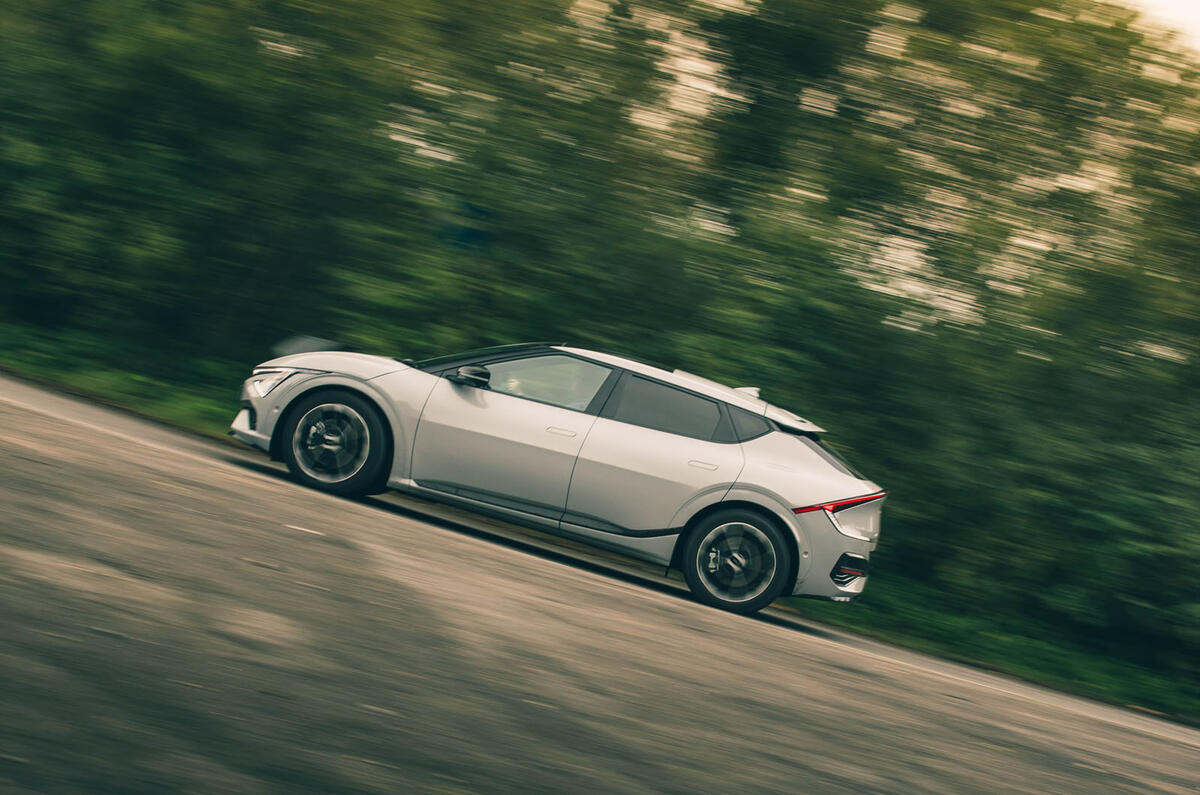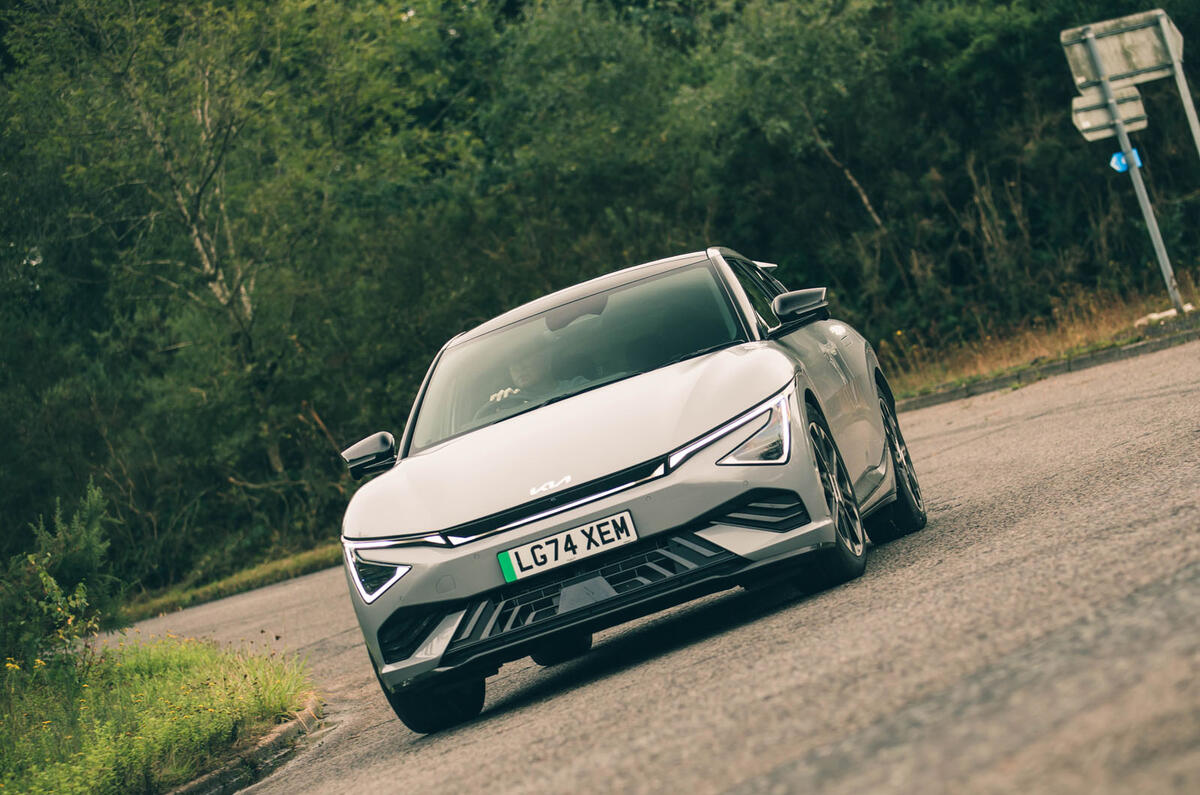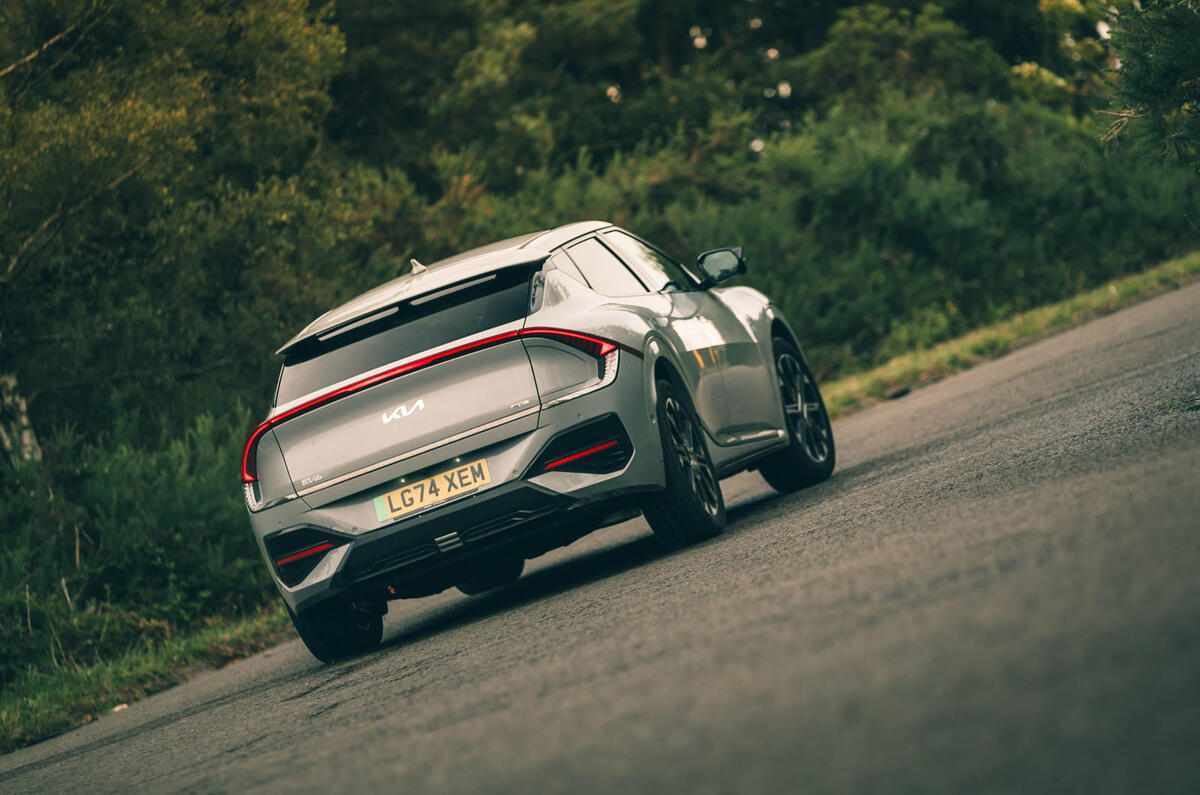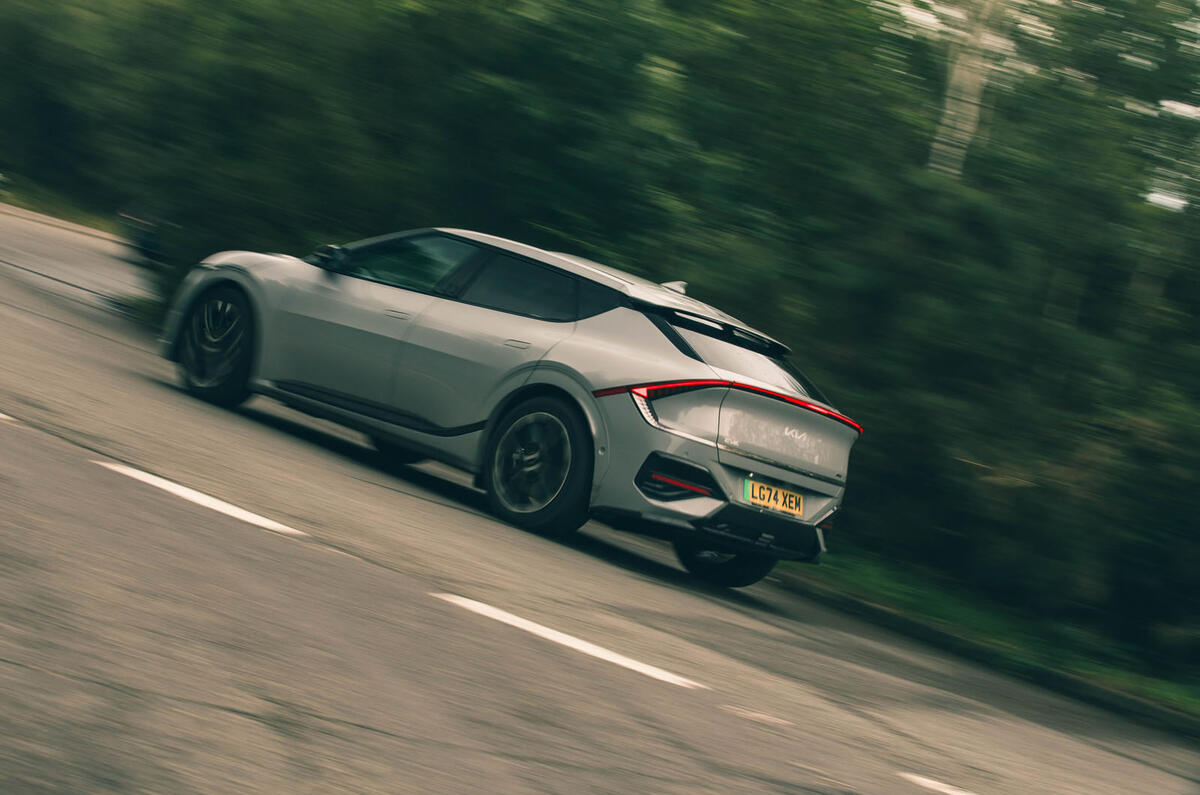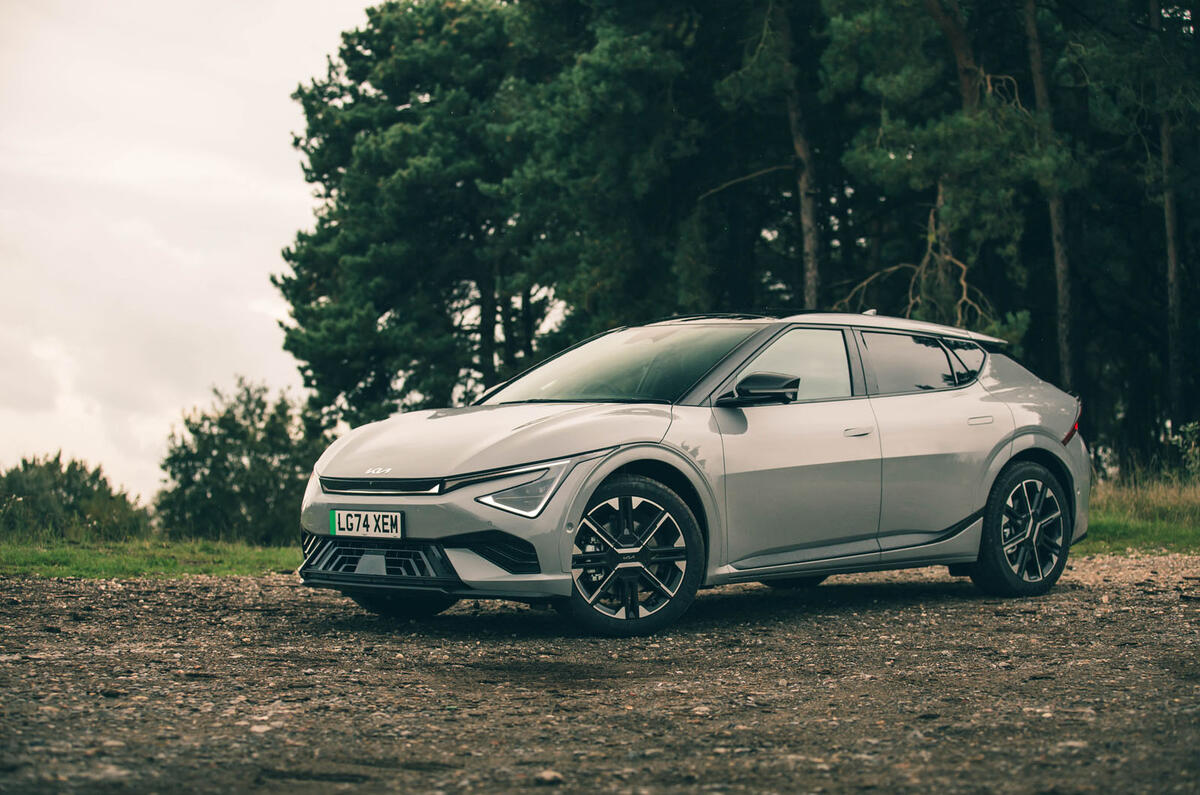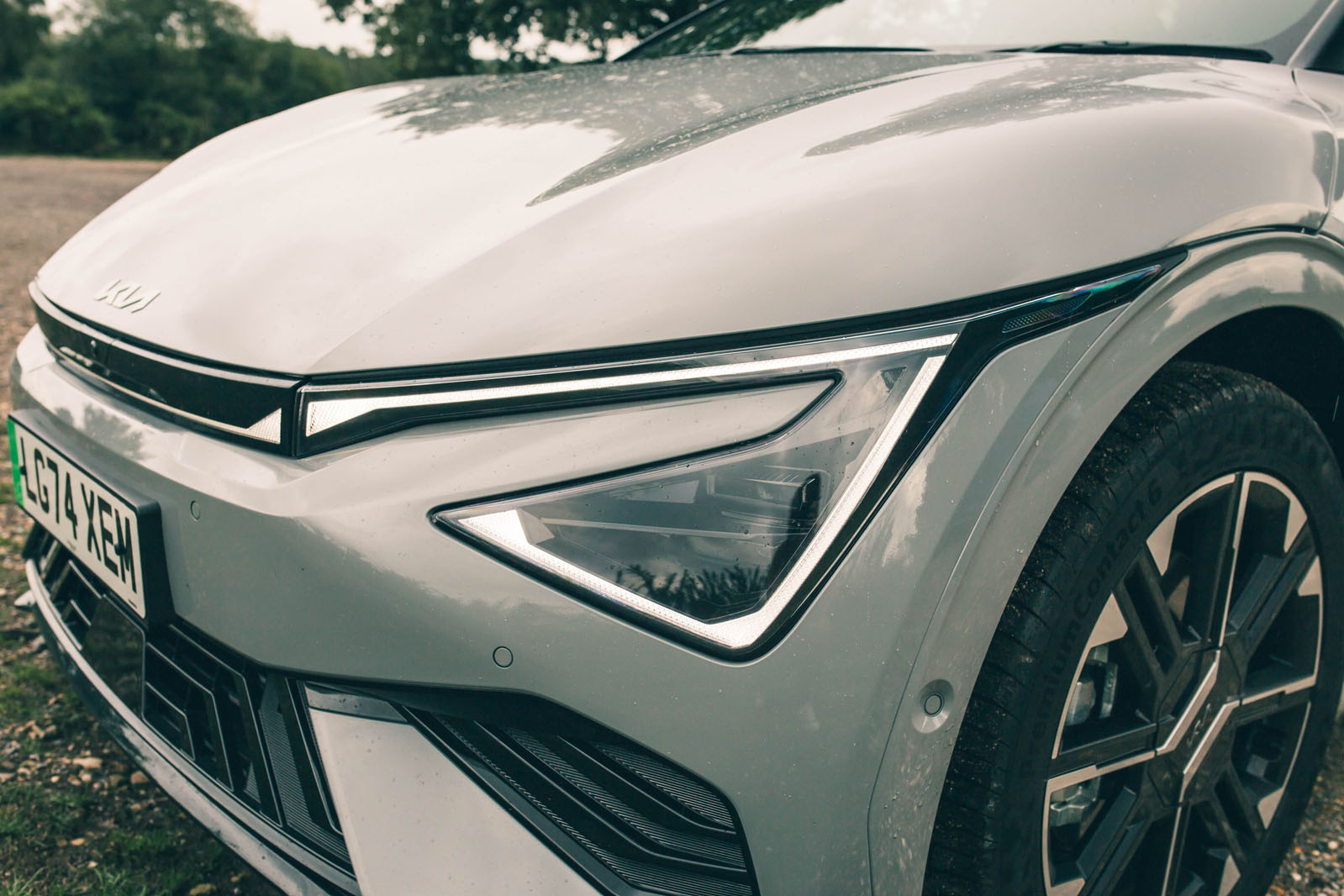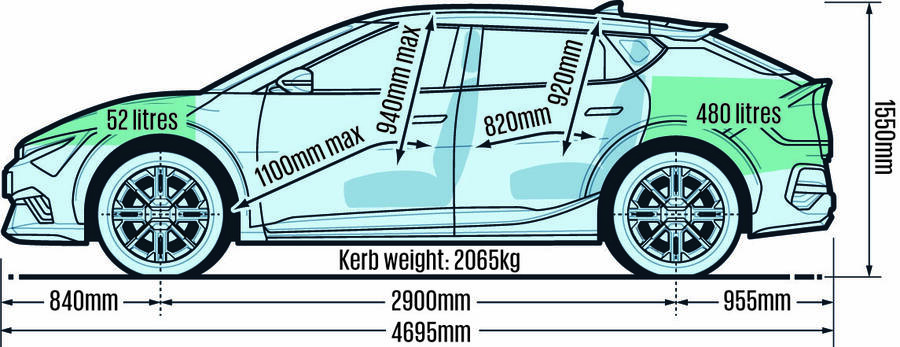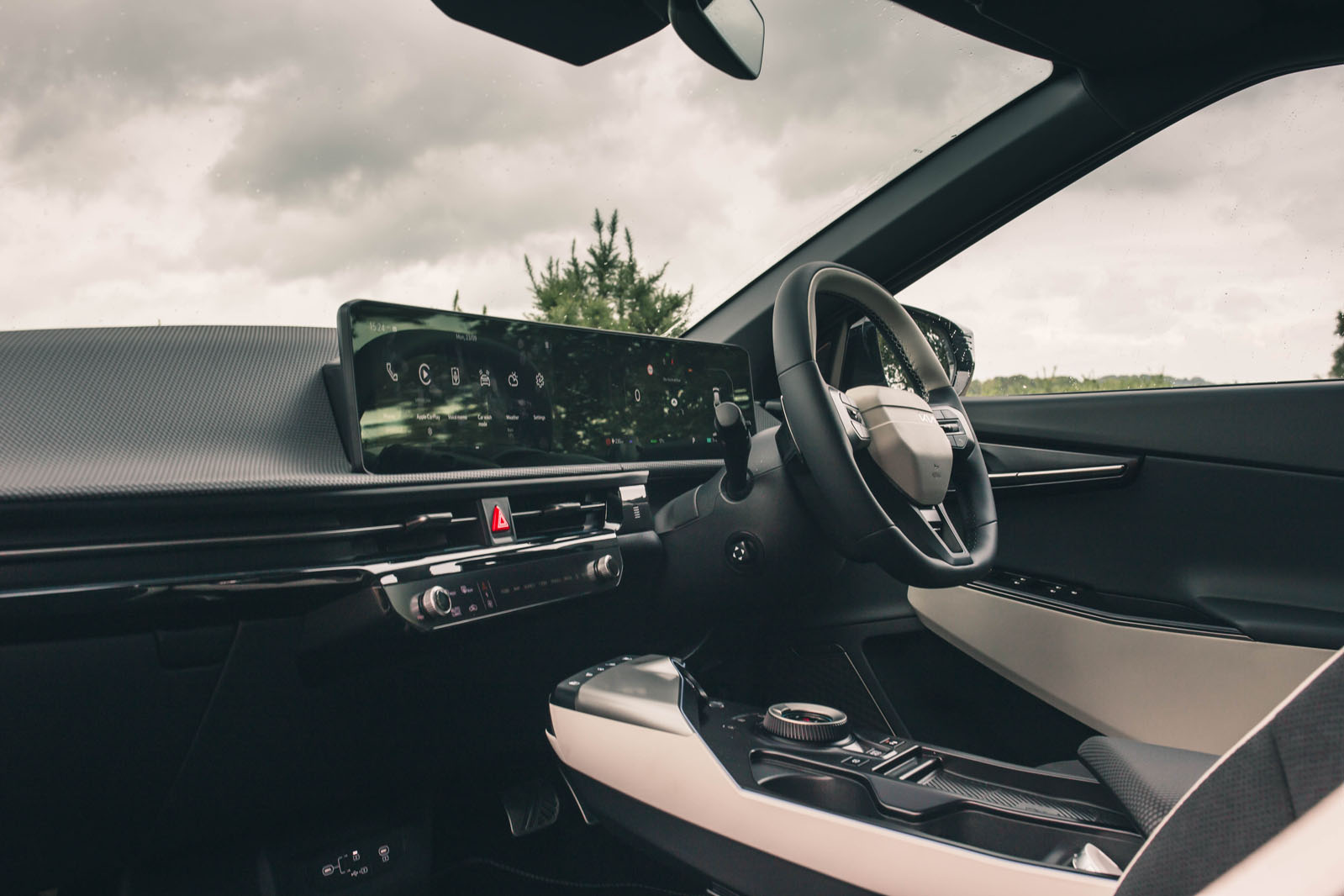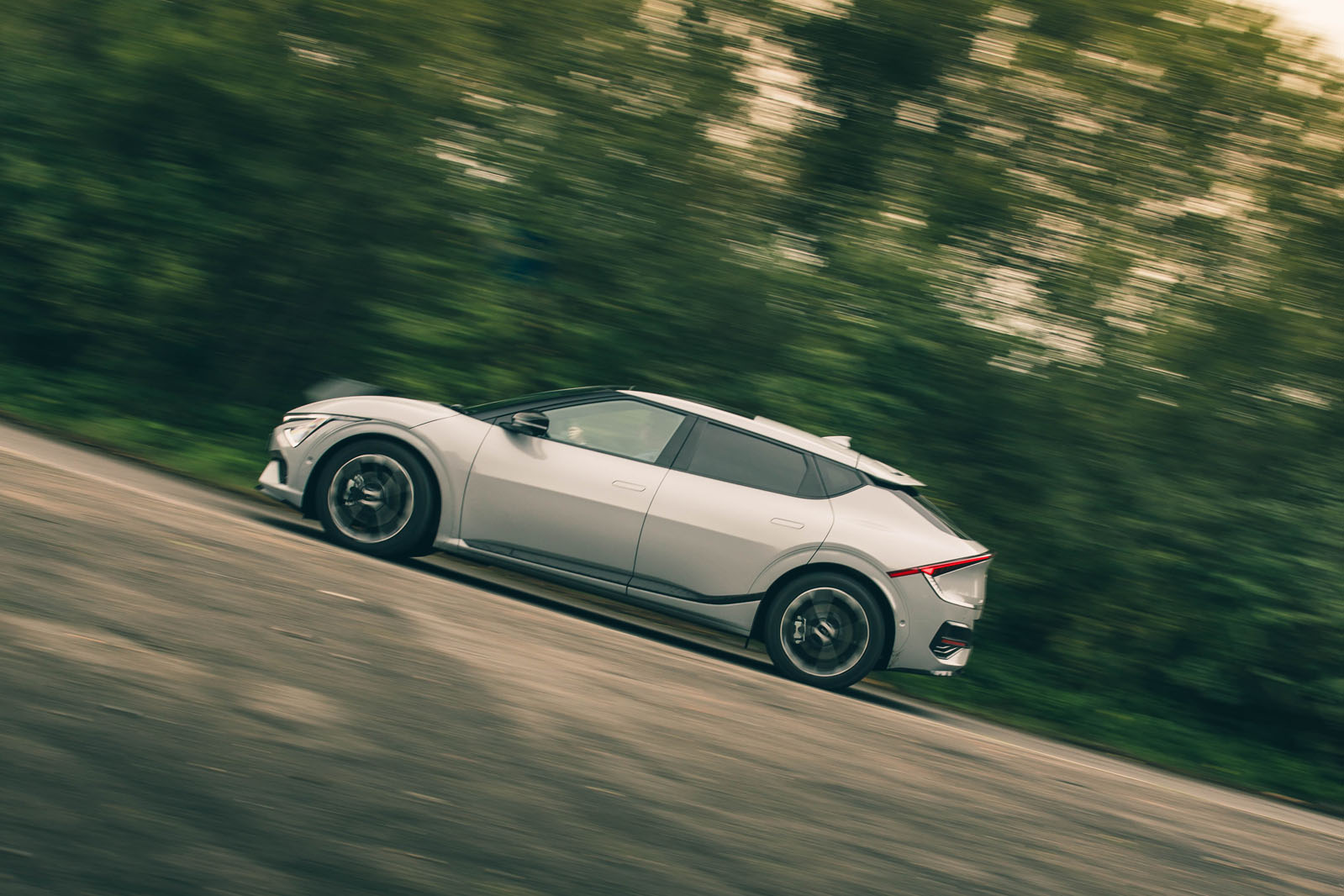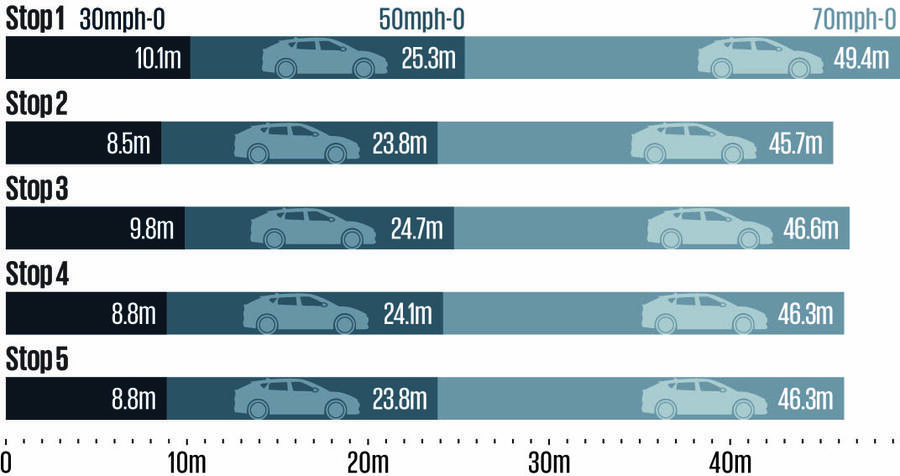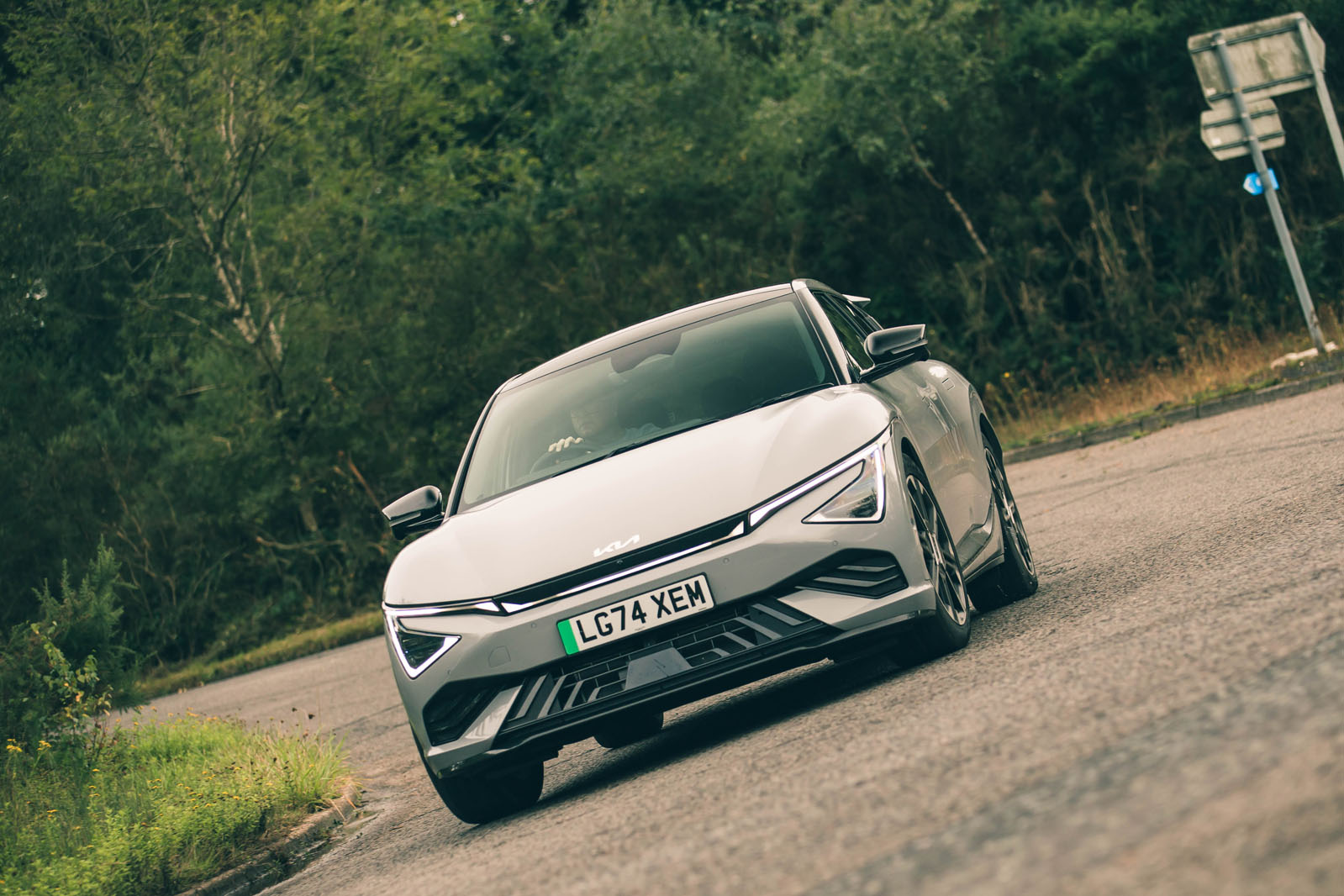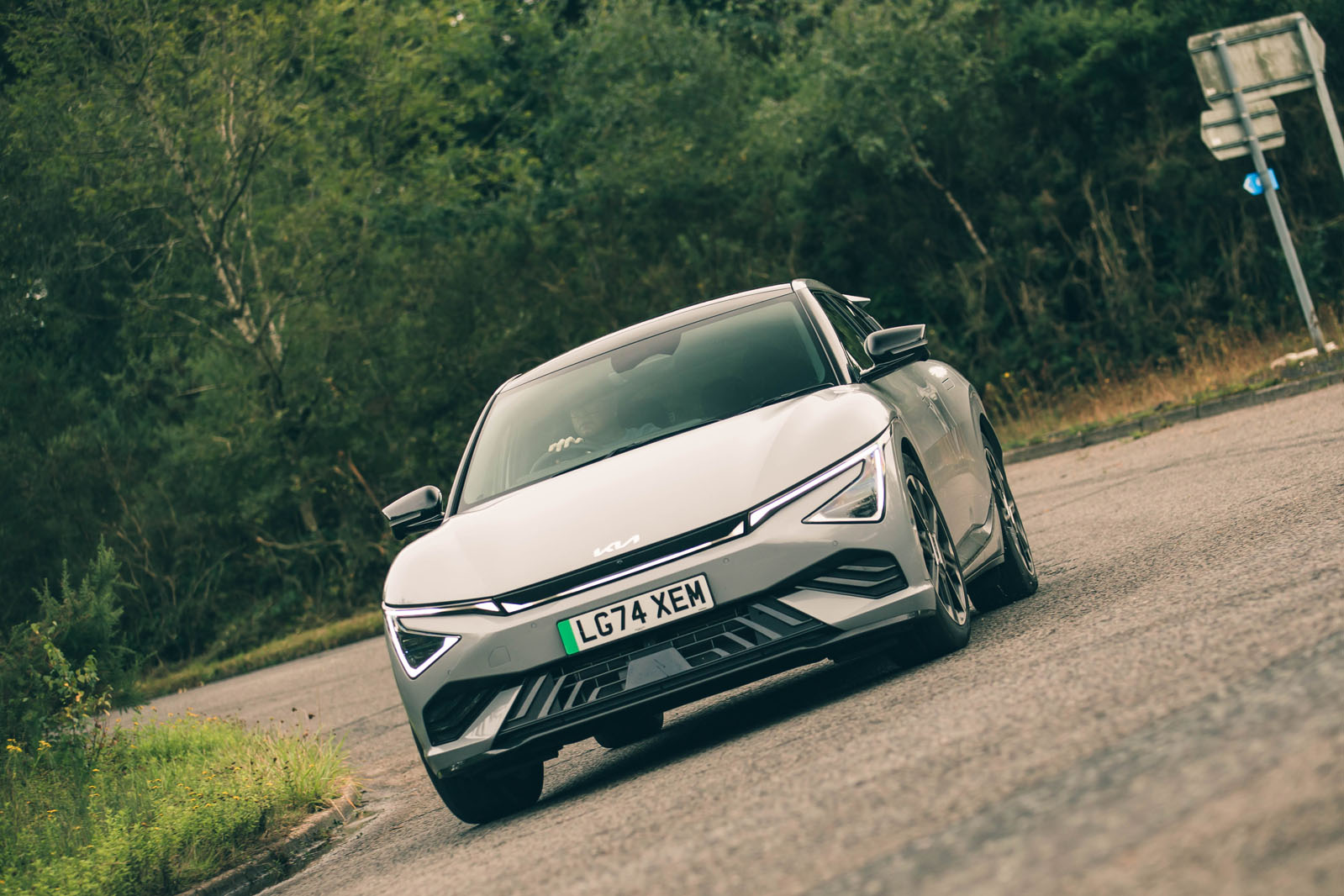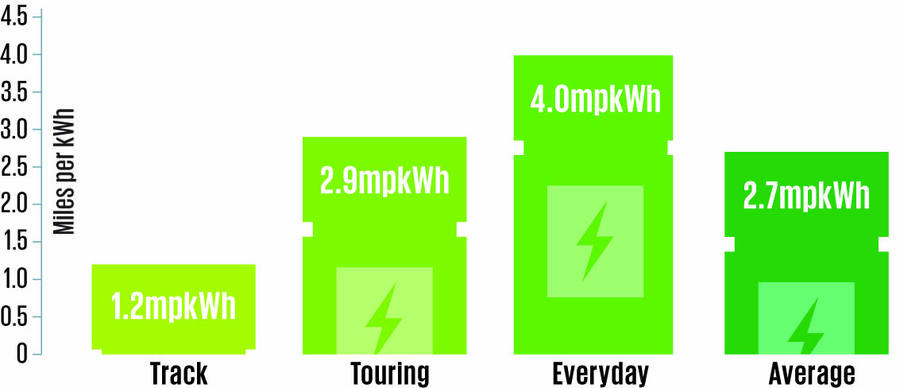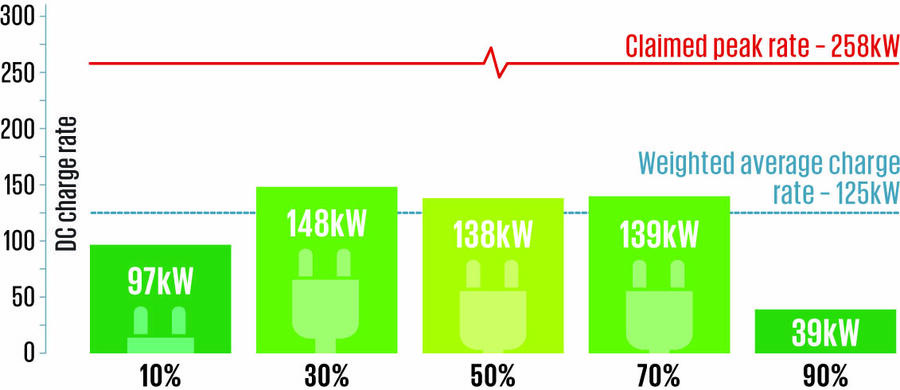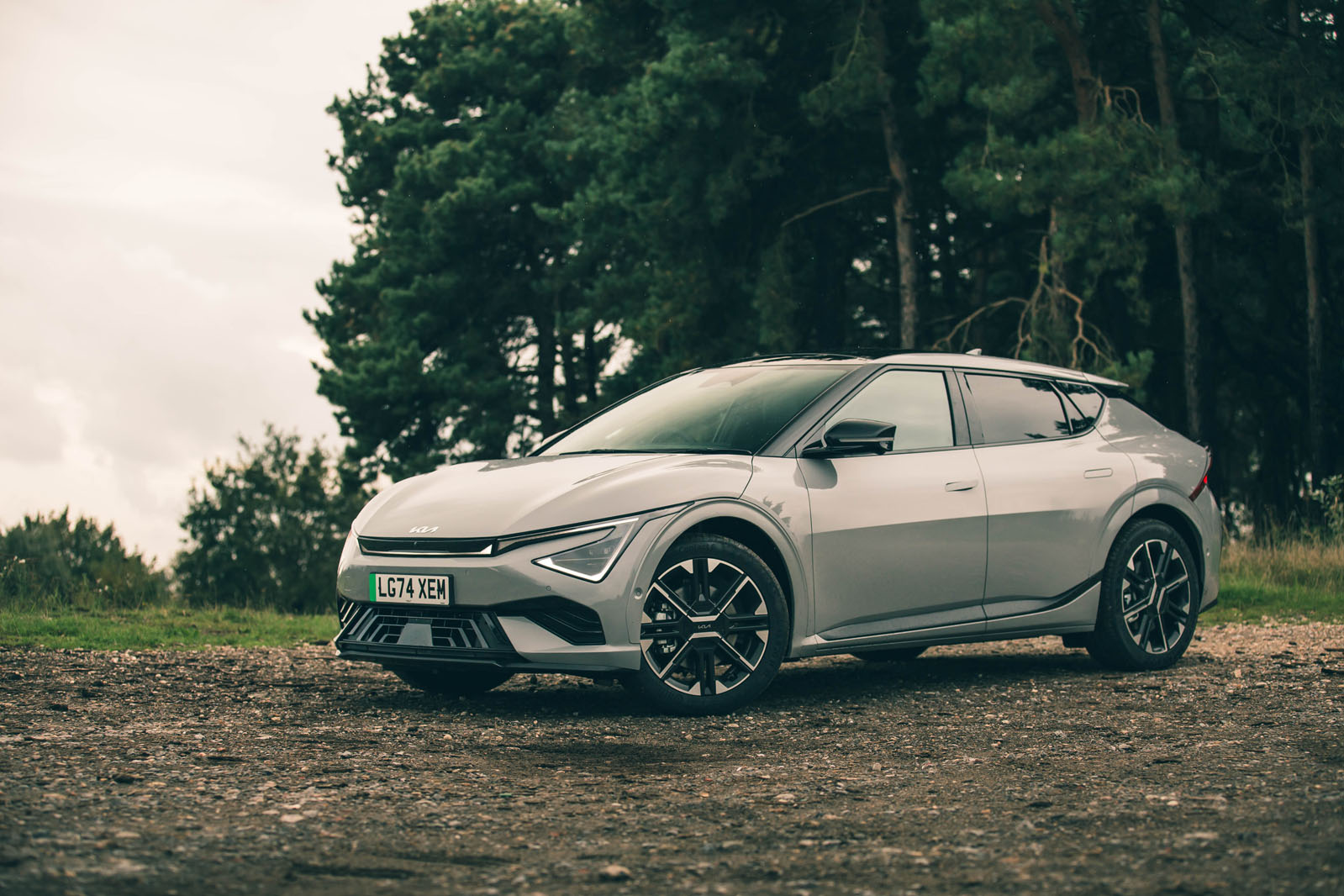A new steering wheel might be the most direct route to freshening your facelifted car’s interior. And so, in replacement of the EV6’s original oversized-looking two-spoke wheel (which always seemed needlessly bulky to us) comes a neater-looking three-spoke design with a smaller central boss. The rim is similarly dimensioned, so doesn’t impart any particular change to steering input, and its controls are mostly grouped on each lateral spoke, just as they were.
Elsewhere around the cabin, some new materials are used on the roll-top dash, door cards and seats, and some new ambient lighting features too. But, for the most part, the EV6’s control layout and cabin configuration have been left alone, and its material quality feel and prevailing standard of fit and finish are both fairly high.
This is an interior that’s usefully open and accessible in its ambience, and mostly quite spacious and practical. Taller testers bemoaned a small but notable shortage of head room in both rows, which you might not expect of a high-riding crossover, though most didn’t consider it a significant problem. According to our tape measure, our test car had 70mm less driver’s head room (940mm) than the Volkswagen Golf GTI we tested earlier this autumn, reduced still further in the second row. It’s a failing we have reported of other e-GMP-based cars, though it’s not as irksome as we found in the Hyundai Ioniq 6.
At any rate, by steering clear of top-level GT Line S trim, you will avoid the fitment of the sunroof that compounds the problem. And few could complain about leg room in either row, or about the EV6’s generous boot space for what is, after all, only really a big hatchback.
Space in the rear is generous, with limousine levels of leg room. However, because of the high floor, taller adult passengers will sit with their knees in mid-air and their thighs unsupported, which can be tiring over long distances, and there isn’t much room under the front seats for feet, either. As a result, the space isn’t quite as comfortable or usable as the raw numbers would suggest. It’s a similar story with the boot: there is plenty of floor space, but because of the battery, the floor itself is rather high, and outright loading space is restricted in some ways.
A refreshed infotainment system leads the array of updated technology fitted to the car. It has extended networked navigation functionality, can update its software over the air and offers wireless smartphone mirroring for both Apple and Android phones.
The separate touch-sensitive bar just below the main touchscreen console remains in place, and is a big aid to navigating the system – especially once you have configured its star button to take you in and out of CarPlay. Without this device, the system would involve a few too many menu levels for our liking, and rather too much prodding and swiping, to find any function without distracting you. With it, access is decently quick and easy.
Due to some recent regulatory changes, the EV6 now also requires a fairly extensive pre-flight check to ensure you’ve deactivated all the warning sirens and intrusive ‘aids’. You will likely forget one or two and then be reminded by blasting bongs a few miles later.
Irritating, but you will have it set up to your preference in seconds after a few drives, and the bong that sounds when you stray over a speed limit can now be switched off by holding down the volume button.






